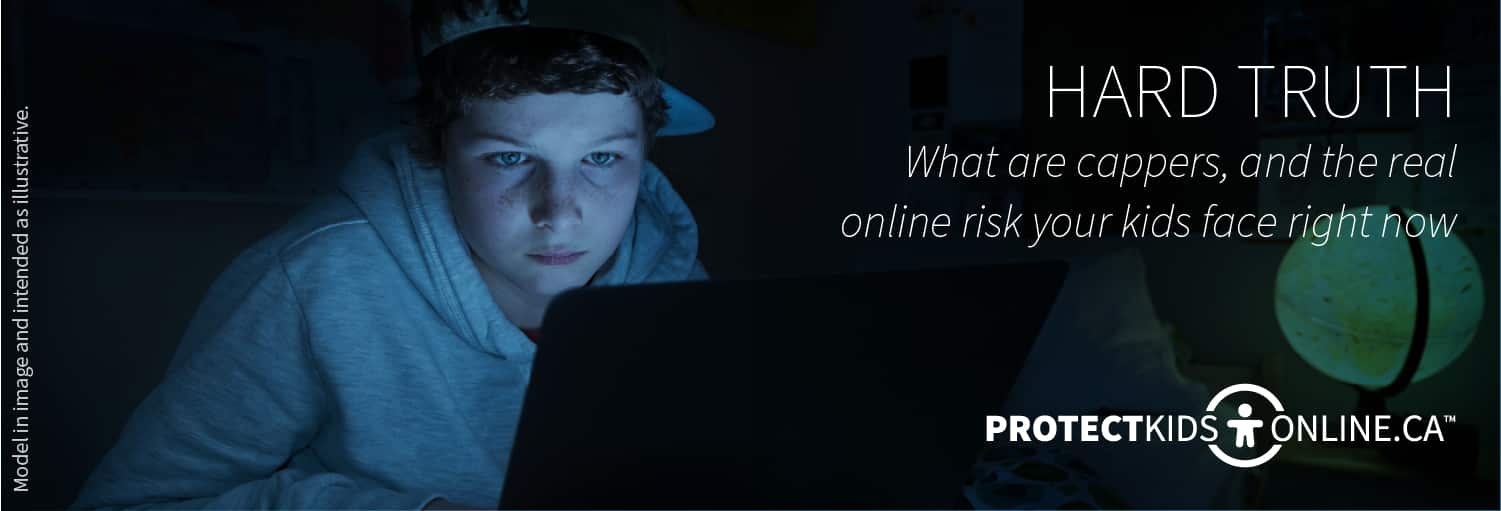Hard Truth
What are cappers, and the real online risk your kids face right now

“With potentially millions of boys around the world being or soon to be forced to stay home from school, potentially unsupervised if parents are working (teens in particular) now is the time for cappers to do their part to assist the quarantine efforts. There is a dire need for enriching, structured activities for all these boys to engage in.”
Truth is we are too soft when we talk about online safety and those looking to harm kids. We hide behind the “may be at risk” statements as not to cause alarm and make people feel a little more comfortable about what happens on the other side of our kids’ screens. However, now is not the time for soft truth.
With kids spending more time online during COVID-19 for both recreation and education, individuals online looking to exploit children are mobilizing and sharing “best practices” for targeting and abusing children during this pandemic. There is no may be; children are at a significant risk of being exploited online by offenders.

What is a capper?
In operating Cybertip.ca, Canada’s tipline for reporting online child sexual abuse and exploitation, and our web crawler Project Arachnid, the Canadian Centre for Child Protection has seen a significant amount of chatter on the dark web amongst child sex offenders. One of the most organized groups appears to be the capper community.
A capper is an individual who tricks kids into committing a sexual act over live stream while screen capturing or recording a video.
Some cappers will use the child’s images/videos to extort them for more sexual images or money. This activity is highly targeted, relentless, and, obviously, quite traumatic for the victim.

Even more unsettling are the cappers who simply take the content without ever disclosing to the youth they have it and then move on to their next target, using the material to elevate their status by exchanging it with other abusers online. The youth within the image/video may never know that sexual content of them is available online and being traded within the offender community.
Along with encouraging each other to target more victims and capitalize on their increased access to children during COVID-19, the cappers are sharing tips and tricks to successfully engage in this activity, including reading a “how to cap manual,” how to use bait videos that trick children into believing they are chatting with a peer, and which platforms will produce the most victims.

How it happens
- Often conversations start on popular platforms such as Instagram® or Snapchat®, then the capper will ask youth to move to another video chat platform.
- From there cappers may use a pre-recorded video — for example a teenage girl taking off her clothes — and asks the youth to do the same.
- Once the youth removes their clothes, or engages in a sexual act, the threats begin almost immediately, notifying the youth the video has been recorded. Reports to Cybertip.ca indicate cappers will often screenshot the youth’s friends list and send a screenshot of the video they took stating it will be released to friends and family if they don’t comply.
For more information on offender tactics and warning signs, visit cybertip.ca/sextortion.

What can you do?
While this is an extremely difficult time for families who are trying to balance working from home, online school activities, and
life in general, the more time children have unrestricted access online, the greater the chance of victimization. Consider the
following quote from an individual on the dark web,
…They recommend parents monitor their kids online activities even more strictly now (we know most will not).
Now more than ever parents must not rely on content filters and parental controls; supervision, along with some additional measures are key:
- Talk to your child about the potential harm that can occur if you get naked on webcam. Once you do this, you have no idea what the person you are communicating with may be doing to record and then possibly share the image/video with others.
- Talk to your child about red flag behaviours online such as attention bombing (persistence with staying in close contact) and chat that quickly escalates to being sexual in nature. Encourage your child to come to you if they notice these things.
- Have regular conversations about what apps, websites, and platforms your children are using, especially those that have live stream capabilities. For further information about conversation tips, read our blog Staying Safe Together.
- Work together to establish guidelines around texting, social media, live streaming, and gaming, such as who your child can do these things with and on what apps. It’s important to remember the platforms children intersect with need to be built with them in mind. This means proper age verification, moderation, and safety built into the design, such as platforms that do not allow children and adults to intermix without rules and regulations.
- Remind your child that their safety is what is most important to you, and if they come across something or someone online that makes them feel uncomfortable they can come to you without fear of getting in trouble.
- If you see, read, or hear anything sexual from an adult towards your child online, report it to Cybertip.ca.
For additional online safety information and resources, visit protectchildren.ca/covid.